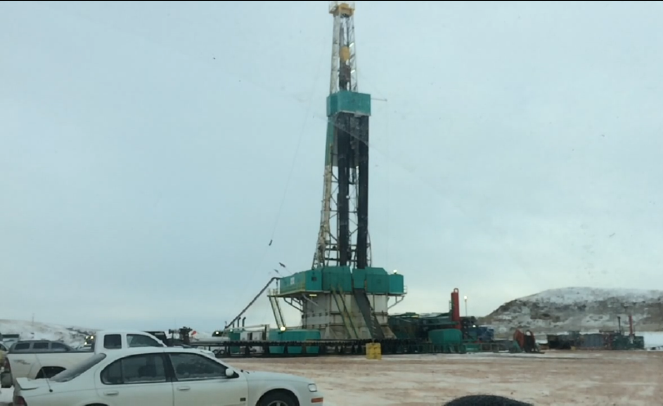
The impact of fracking is massive. Large increases in production of natural gas and crude oil has created a long list of favorable economic and environment impacts.
7/6/17 – Victor Davis Hanson at National Review – The Fracking Industry Deserves Our Gratitude – Prof. Hanson provides a fast survey of how much fracking has improved the American economy. Fracking is the combination of horizontal drilling with hydraulic fracturing.
The impact of fracking is staggering.
Ten years ago eeeeeeverybody knew for an absolute certainty that Peak Oil was here and we were about to run out of oil. The Secretary of Energy was wishfully musing that gasoline would rise from $4 to $10 a gallon.
In the last five years, gasoline prices are down about $1.50 a gallon, surge in natural gas production displaced coal consumption which has reduced our CO2 output by 12% in the last decade (surpassing the EU in cuts), and reduced our oil imports by five million barrels a day.
Let me rephrase that part about CO2…
Because of the surge of natural gas production and the shift from coal to natural gas, the output of CO2 in the US has dropped more than the drops achieved by the European Union. Low cost natural gas led electricity users to decrease use of coal, which reduced CO2 output. Frackers ought to get the direct benefit for the environmental improvement. Again, environmentalists should be sending thank you notes to frackers every day.
Oil production will soon hit 10M bopd in the US, which will be the highest in our history. That puts the US within reach of being the largest oil producer in the world. Add in natural gas and the US is already the largest energy producer in the world.
Ripple effects are drawing back to the US energy intensive industries, such as aluminum, plastics, and fertilizers, because of the surging production, dropping prices, and high likelihood the low prices and high supplies will continue for a long time.
Article points out the benefits just don’t stop. OPEC is approaching powerlessness, Russia is constrained as much by shrunken oil sales as by fear of NATO, and other troublemakers (Iran and Venezuela) have around half the oil income they did 10 years ago.
As Glenn Reynolds is fond of saying:
Have you hugged a fracker today?
7/3/17 – I have not been tuned into happenings in Permian Basin. Production there is surging phenomenally. The price drop engineered by OPEC doesn’t seem to have phased drillers in Permian. Slowed them down a bit in late 2014, but they kept on drillin’.
Check out these two graphs:

Here’s the same information from the Energy Information Administration:

In visual form those graphs show why OPEC+Russia are in such distress, unable to control global oil prices. Ponder the impact on oil price equilibrium of an additional half million barrels a day on the market since first round of price drop and the impact of an extra 1.5 million bopd since about early 2011.
Staggering.
7/2/17 – The American Interest – North America Is Making OPEC Irrelevant – As a secondary factor to the above-mentioned massive increase in Permian Basin, consider that this article quotes a Financial Times report quoting a Canadian trade association that production from Canadian oil sands is going to increase 270,000 bopd in 2017 and an additional 320,000 bopd in 2018. That is another ~600K bopd in two years, which is one-third of the OPEC+Russia production cuts.
Article says drilling activity in the US has slowed down as a result of recent price drops but will pick up quickly if prices increase slightly.
Article repeats a quote from Daniel Yergin from April 2016:
The era of OPEC as a decisive force in the world economy is over.
Surge in production in Permian Basin, increasing production in Bakken, and expected surge from Canadian oil sands. Wow.
6/27/17 – The American Interest – Even Shales’s Secondary Effects Are Staggering – Article points out that since 2012 oil production in the US has increased 5,000,000 barrels a day and natural gas production has increased around 33%.
A ripple effect of the massive increase in energy production is a boom in the petrochemical industry. The feedstock for a huge portion of the things we use every day (most of the interior of your automobile or anything having plastic in it) is oil and natural gas. There is a boom in the petrochemical industry with huge investments in new plants.
The wide-ranging impacts from horizontal drilling and hydraulic fracturing are staggering.